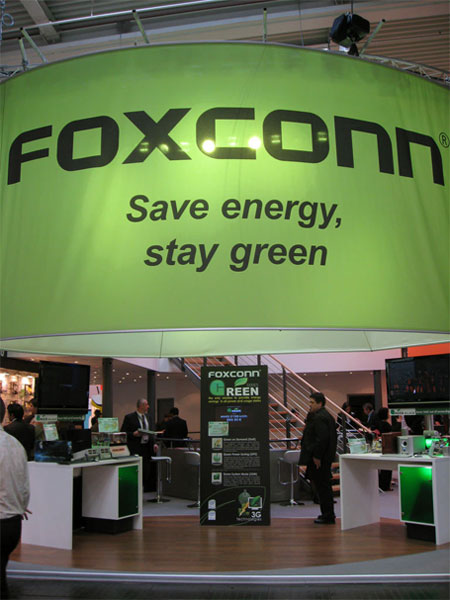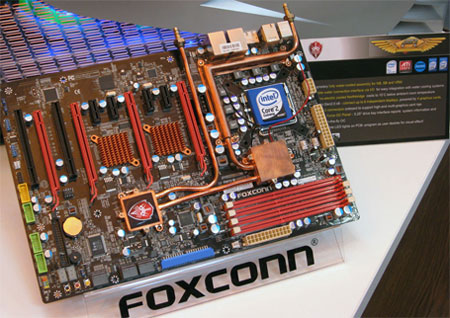CeBIT 2008: Foxconn shows off Concept for Combined Peltier and Water Cooling
Foxconn’s CeBIT stand is dominated by a so-called Theme Park that is lit green in keeping with the Green IT theme. Here, the company presents system solutions and motherboards that are meant to save energy thanks to various technological innovations. For one, individual phases of the power circuitry can be switched off when they are not needed, increasing efficiency. Additionally, Foxconn’s boards can dynamically lower their system speed, lowerin power consumption even further. However, Foxconn isn’t the only company using these techniques - ASUS, Gigabyte and MSI also offer products that are capable of reducing dynamically adjusting their power consumption during operation.This year’s CeBIT follows the motto "Green IT". Of course, this is not the case because the companies have suddenly discovered their greener sides. Instead, to be blunt, there is a profit to be made by appealing to the buyers’ environmental conscience. (Compare Prices on Foxconn Motherboards)
Another object of interest at Foxconn’s booth is a P45 motherboard that the company has equipped with everything but the kitchen sink. By using AMD components, the board is able to offer four fully-featured PCI-Express cards that can be equipped with graphics cards. Since four current-gen high-end cards would be too much to handle for any power supply, the board also sports two PSU connectors. Special attention was also given to the cooling solution. Of course there is the heatpipe which has become an obligatory feature on any enthusiast board. Additionally, the prototype also sports a thermoelectric (Peltier) cooler for the northbridge as well as connectors for a liquid cooling solutions. Obviously, this design concept doesn’t fit in very well with the company’s other ecological statements - then again, it is an extreme prototype we’re talking about.
Although Foxonn claims high customer interest, it is not planning to mass produce this P45 motherboard with 4 x16 PEG 2.0 slots, a complex heatpipe and elaborate thermoelectric northbridge cooling.
This prototype system, called F1, contains four Radeon HD3870 boards and is able to drive up to ten displays. Microspft’s Flight Simulator X was used to demonstrate.
Get Tom's Hardware's best news and in-depth reviews, straight to your inbox.
Tom's Hardware is the leading destination for hardcore computer enthusiasts. We cover everything from processors to 3D printers, single-board computers, SSDs and high-end gaming rigs, empowering readers to make the most of the tech they love, keep up on the latest developments and buy the right gear. Our staff has more than 100 years of combined experience covering news, solving tech problems and reviewing components and systems.



